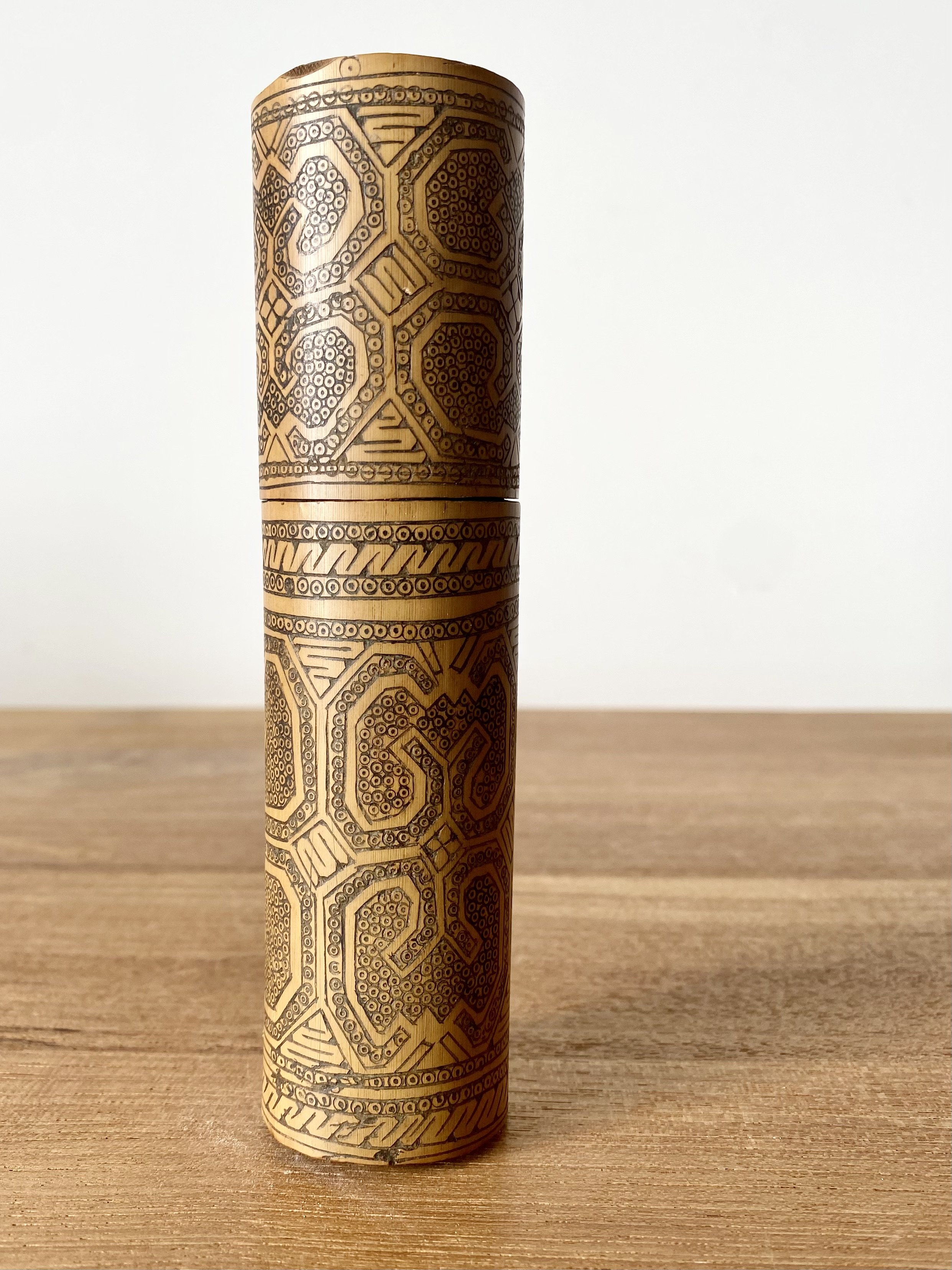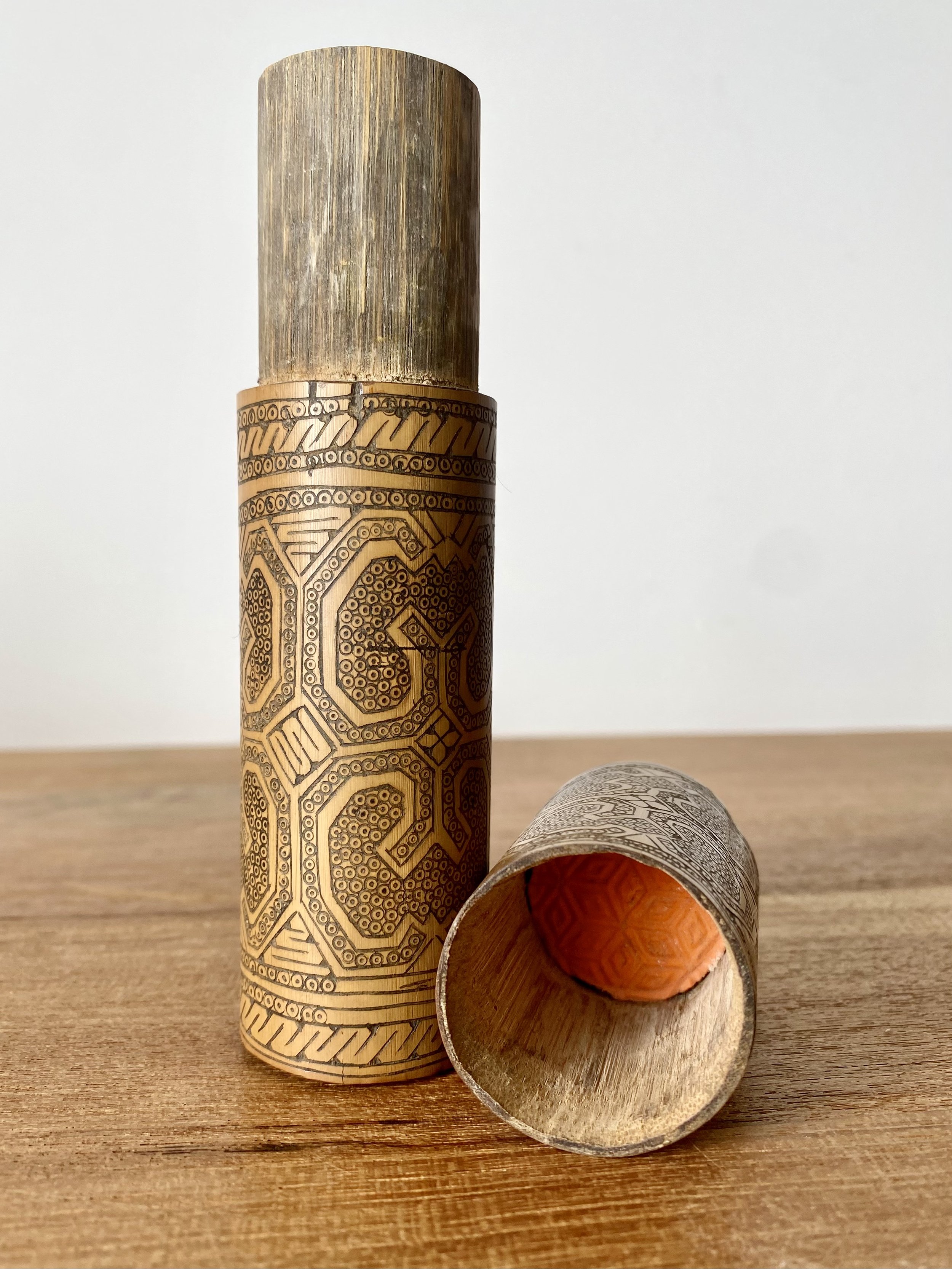 Image 1 of 5
Image 1 of 5

 Image 2 of 5
Image 2 of 5

 Image 3 of 5
Image 3 of 5

 Image 4 of 5
Image 4 of 5

 Image 5 of 5
Image 5 of 5






Betel Lime Container
Betel chewing is an ancient tradition in much of the Western Pacific region, as well as in South- and Southeast Asia. Archaeological evidence suggests that the practice originated in the Philippines, at least 5,000 years ago. Three main ingredients are involved: "betel nut," actually the fruit of the areca palm (Areca catechu); betel leaf (Piper betle); and slaked lime (usually derived from crushed seashells). Typically, thin slices of areca nut and a dash of lime are wrapped in a betel leaf to make a "quid" for chewing. Other flavorings may be added according to taste and local custom, including clove, cardamom, and increasingly, tobacco. The combination acts a mild stimulant, causing increased alertness and an overall warming sensation. The major active ingredient is the alkaloid arecoline, but there are dozens of other compounds in play.
Bamboo lime container. West Timor, Indonesia. 20th century. Rubber stoppers with an impressed design. 5 3/4" tall x 1 3/8" in diameter. Images of areca nut and betel leaves for context.
Betel chewing is an ancient tradition in much of the Western Pacific region, as well as in South- and Southeast Asia. Archaeological evidence suggests that the practice originated in the Philippines, at least 5,000 years ago. Three main ingredients are involved: "betel nut," actually the fruit of the areca palm (Areca catechu); betel leaf (Piper betle); and slaked lime (usually derived from crushed seashells). Typically, thin slices of areca nut and a dash of lime are wrapped in a betel leaf to make a "quid" for chewing. Other flavorings may be added according to taste and local custom, including clove, cardamom, and increasingly, tobacco. The combination acts a mild stimulant, causing increased alertness and an overall warming sensation. The major active ingredient is the alkaloid arecoline, but there are dozens of other compounds in play.
Bamboo lime container. West Timor, Indonesia. 20th century. Rubber stoppers with an impressed design. 5 3/4" tall x 1 3/8" in diameter. Images of areca nut and betel leaves for context.